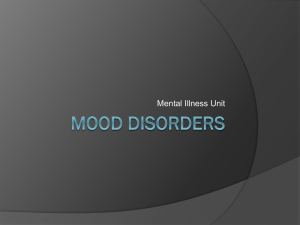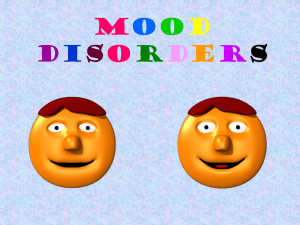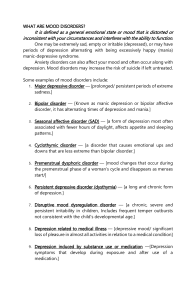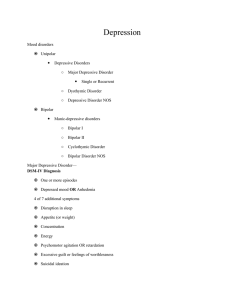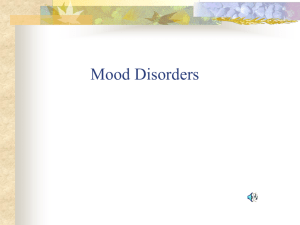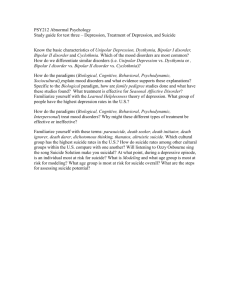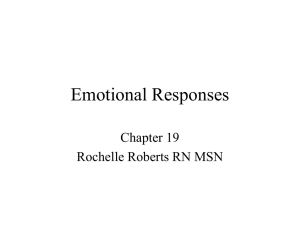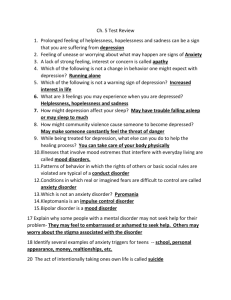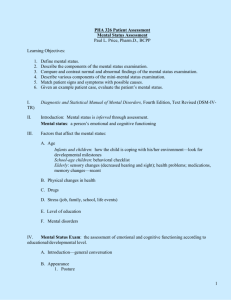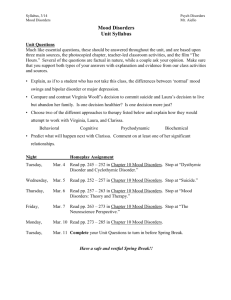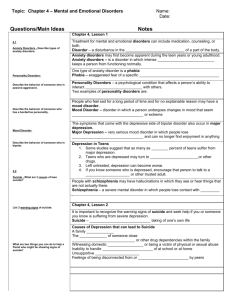Mood Disorders Concept Check: Types, Causes, & Treatment
advertisement
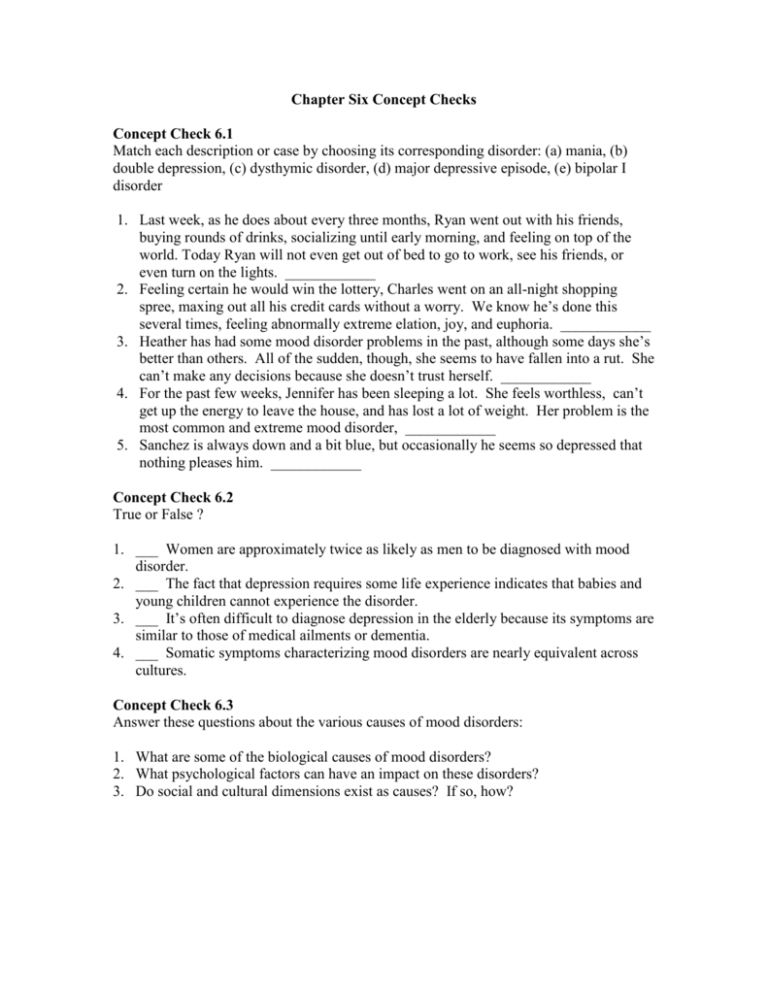
Chapter Six Concept Checks Concept Check 6.1 Match each description or case by choosing its corresponding disorder: (a) mania, (b) double depression, (c) dysthymic disorder, (d) major depressive episode, (e) bipolar I disorder 1. Last week, as he does about every three months, Ryan went out with his friends, buying rounds of drinks, socializing until early morning, and feeling on top of the world. Today Ryan will not even get out of bed to go to work, see his friends, or even turn on the lights. ____________ 2. Feeling certain he would win the lottery, Charles went on an all-night shopping spree, maxing out all his credit cards without a worry. We know he’s done this several times, feeling abnormally extreme elation, joy, and euphoria. ____________ 3. Heather has had some mood disorder problems in the past, although some days she’s better than others. All of the sudden, though, she seems to have fallen into a rut. She can’t make any decisions because she doesn’t trust herself. ____________ 4. For the past few weeks, Jennifer has been sleeping a lot. She feels worthless, can’t get up the energy to leave the house, and has lost a lot of weight. Her problem is the most common and extreme mood disorder, ____________ 5. Sanchez is always down and a bit blue, but occasionally he seems so depressed that nothing pleases him. ____________ Concept Check 6.2 True or False ? 1. ___ Women are approximately twice as likely as men to be diagnosed with mood disorder. 2. ___ The fact that depression requires some life experience indicates that babies and young children cannot experience the disorder. 3. ___ It’s often difficult to diagnose depression in the elderly because its symptoms are similar to those of medical ailments or dementia. 4. ___ Somatic symptoms characterizing mood disorders are nearly equivalent across cultures. Concept Check 6.3 Answer these questions about the various causes of mood disorders: 1. What are some of the biological causes of mood disorders? 2. What psychological factors can have an impact on these disorders? 3. Do social and cultural dimensions exist as causes? If so, how? Concept Check 6.4 Indicate which type of treatment for mood disorders is being described in each statement. 1. The controversial but somewhat successful treatment involving the production of seizures through electrical shock to the brain ____________ 2. This teaches clients to carefully examine their thought process and recognize “depressive” errors in thinking ____________ 3. These come in three main types (tricyclics, MAOI’s, and SSRI’s), are often prescribed, but have numerous side effects. ____________ 4. These antidepressants must be carefully regulated to avoid illness, but have the advantage of affecting manic episodes. ____________ 5. It is crucial to focus on resolving problems in existing relationships and learn to form new interpersonal relationships ____________ 6. This is in an effort to prevent relapse or recurrence over the long run ____________ Concept Check 6.5 Match each of the following summaries with the correct suicide type, choosing from (a) altruistic, (b) egoistic, (c) anemic, (d) fatalistic. 1. Ralph’s wife left him and took the children. He is a well-known TV personality but, due to a conflict with the new station owners, he was recently fired. If Ralph kills himself, his suicide would be considered ____________. 2. Sam killed himself while a prisoner of war in Vietnam. ____________ 3. Sheiba lives in a remote village in Africa. She was recently caught in an adulterous affair with a man in a nearby village. Her husband wants to kill her, but won’t have to because of a tribal custom that requires her to kill herself. She leaps from the nearby “sinful woman’s cliff.” ____________ 4. Mabel lived in a nursing home for many years. At first, her family and friends visited her often; now they only come at Christmas Her two closest friends in the nursing home die recently. She has no hobbies or other interests. Mabel’s suicide would be identified as what type? ____________ Answers to Concept Checks 6.1 1. e 2. a 6.2 1. T 2. F (it does not require life experience) 3. c 4. d 5. b 3. T 4. T 6.3 1. genetics, neurotransmitter system, endocrine system, circadian/sleep rhythms, neurohormones, etc. 2. stressful life events, learned helplessness, depressive cognitive triad, negative schema, cognitive vulnerability 3. marital dissatisfaction, gender, few social supports 6.4 1. electroconvulsive therapy (ECT) 2. cognitive therapy 3. antidepressants 4. lithium 5. interpersonal psychotherapy (IPT) 6. maintenance treatment 6.5 1.c 2. d 3. a 4. b
